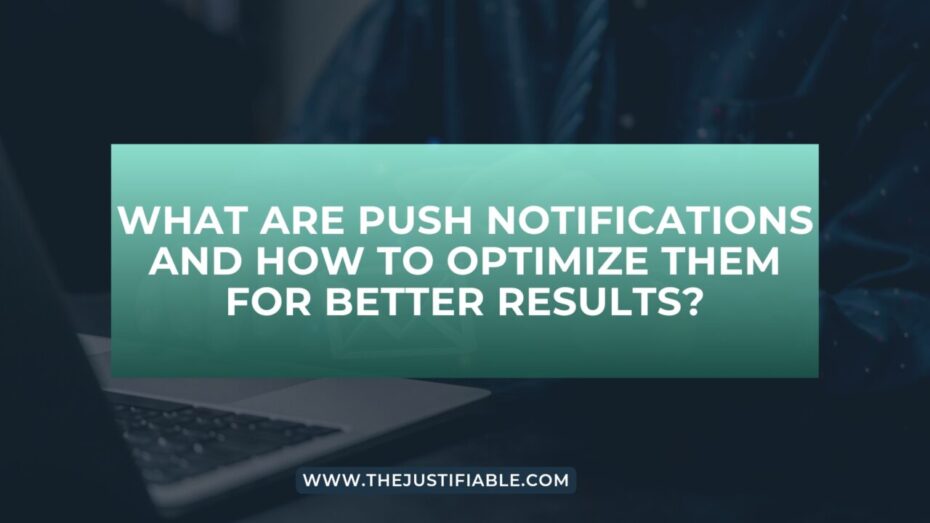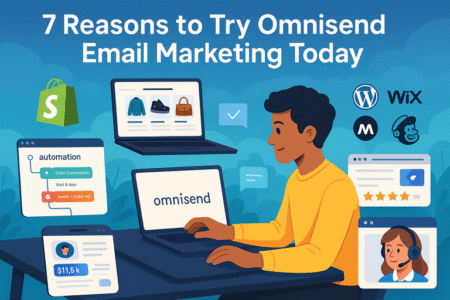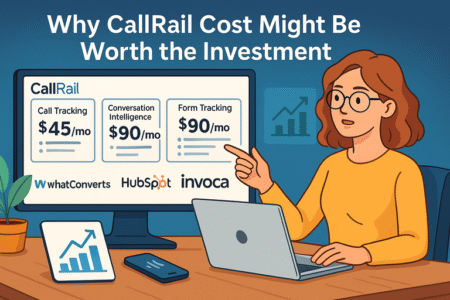Table of Contents
What are push notifications and how to optimize them for better results? In today’s digital world, effective communication with users is essential for businesses to thrive. One of the most powerful tools in achieving this is push notifications.
But what are push notifications, and how can they be optimized for better results? In this article, we will delve into the various aspects of push notifications, including their benefits, types, and how they work. We will also discuss strategies and best practices to help you make the most of push notifications for your website or mobile app.
What Are Push Notifications and Why Are They Important?
Push notifications are short, targeted messages sent by websites or mobile apps to users who have opted in to receive them. They are designed to grab attention and prompt user engagement, making them an essential tool for businesses to stay connected with their audience.
By using push notifications effectively, businesses can increase user engagement, drive conversions, and enhance customer loyalty.
Benefits of Push Notifications
Push notifications offer numerous benefits to businesses and users alike. For businesses, they can help drive user engagement, increase brand awareness, and boost retention rates. Push notifications can also provide valuable insights into user behavior, enabling businesses to tailor their marketing strategies more effectively.
For users, push notifications keep them informed about relevant content, promotions, and updates, providing a personalized experience that can lead to increased satisfaction and loyalty.
Types of Push Notifications
There are various types of push notifications, including informational, promotional, and transactional notifications. Informational push notifications keep users updated on important news, updates, or announcements.
Promotional push notifications are used to advertise special offers, discounts, or new products. Transactional push notifications provide updates on user actions, such as order confirmations, delivery updates, or payment receipts.
By using a combination of these types of notifications, businesses can provide a more comprehensive and engaging user experience.
How Push Notifications Work
Push notifications are delivered through a series of steps involving app developers, push notification services, and user devices. App developers create and configure push notifications using software development kits (SDKs) provided by push notification services.
Once a user opts in to receive notifications from a website or mobile app, their device is assigned a unique identifier. When a business sends a push notification, it is delivered to the user’s device via the push notification service, which processes and forwards the message based on the device’s unique identifier.
Push Notifications for Websites and Mobile Apps
Push notifications for websites and mobile apps play a crucial role in keeping users engaged and informed. By utilizing web and mobile push notifications effectively, businesses can maintain a strong connection with their audience, driving traffic, promoting offers, and delivering personalized experiences.
Mastering the use of push notifications across platforms can lead to increased user satisfaction, higher conversion rates, and improved overall performance.
Web Push Notifications
Web push notifications are messages sent by websites to users who have opted in to receive them. They can be displayed on desktop or mobile browsers, even when the user is not actively browsing the website. Web push notifications are a powerful tool for businesses to engage users and drive traffic back to their website.
Mobile Push Notifications
Mobile push notifications are messages sent by mobile apps to users who have opted in to receive them. They can be displayed on the user’s device, even when the app is not running. Mobile push notifications are essential for keeping users engaged with your app and encouraging them to return frequently.
Push Notifications for Websites
Implementing push notifications for websites involves integrating a web push notification service with your website. This service will enable you to create, manage, and send push notifications to users who have opted in.
By using web push notifications, you can keep your website visitors informed about updates, promotions, or other relevant content, encouraging them to return and engage with your site.
Push Notifications for Mobile Apps
For mobile apps, push notifications require integration with the app’s software development kit (SDK) and push notification service. This allows you to create, manage, and send push notifications to users who have opted in. Mobile push notifications are crucial in retaining users, driving engagement, and fostering loyalty to your app.
Push Notification Strategies and Best Practices
Adopting push notification strategies and best practices is essential for maximizing the impact of your push notifications. By focusing on personalization, relevance, and timing, you can create compelling messages that resonate with users.
Implementing these strategies, alongside utilizing user segmentation, A/B testing, and analytics, enables you to continuously optimize your campaigns, resulting in higher engagement, improved conversion rates, and stronger customer loyalty.
Push Notification Services
Push notification services are platforms that help businesses create, manage, and send push notifications. By utilizing a reliable push notification service, businesses can ensure the efficient delivery of messages to their users. Some popular push notification services include OneSignal, Firebase Cloud Messaging (FCM), and Airship.
Push Notification Marketing
Push notification marketing involves using push notifications to promote a business’s products, services, or offers. To succeed in push notification marketing, it’s essential to develop a strategy that focuses on personalization, relevance, and timeliness. By sending notifications that resonate with users, businesses can increase engagement and conversion rates.
Push Notification Campaigns
Push notification campaigns are a series of notifications designed to achieve a specific marketing objective, such as promoting a sale, launching a new product, or increasing app engagement. When planning a push notification campaign, it’s crucial to consider factors like targeting, frequency, and timing to ensure maximum effectiveness.
Push Notification Automation
Push notification automation involves using software to automatically send push notifications based on specific triggers or user actions. Automation can help businesses save time and resources while ensuring that users receive timely and relevant notifications.
Examples of push notification automation include sending a welcome message to new app users, reminding users of abandoned shopping carts, or notifying users of upcoming events.
Push Notification Tools and Software
Push notification tools and software enable businesses to create, manage, and analyze their push notifications. These tools can help you design visually appealing notifications, segment your audience, and track performance metrics. Some popular push notification tools include OneSignal, Pusher, and MoEngage.
Push Notification Analytics
Push notification analytics involves tracking and analyzing data related to your push notifications’ performance. This can help you understand which types of notifications resonate with your users and inform your future marketing strategies. Key metrics to track include delivery rates, open rates, click-through rates, and conversion rates.
Push Notification Engagement
Push notification engagement refers to how users interact with your push notifications. High engagement indicates that your notifications are relevant and valuable to users.
To improve push notification engagement, focus on personalization, relevance, and timing, and ensure that your notifications provide value to users.
Push Notification Personalization
Personalizing push notifications involves tailoring messages to individual users based on their preferences, behavior, or demographics. Personalization can lead to higher engagement rates, as users are more likely to interact with content that feels relevant and customized.
Examples of push notification personalization include addressing users by name, recommending products based on browsing history, or sending location-based offers.
Push Notification Click-Through Rates
Push notification click-through rates (CTR) measure the percentage of users who click on a push notification after receiving it. A high CTR indicates that your notifications are effective in capturing users’ attention and driving engagement. To improve CTR, focus on crafting compelling, personalized messages and optimizing the timing and frequency of your notifications.
Push Notification User Segmentation
User segmentation involves dividing your audience into smaller groups based on shared characteristics, such as demographics, behavior, or preferences. By segmenting your users, you can send targeted push notifications that cater to each group’s unique needs and interests, resulting in higher engagement and conversion rates.
Push Notifications for E-commerce
Push notifications can play a crucial role in driving e-commerce success. They can be used to inform users of promotions, remind them of abandoned carts, or provide personalized product recommendations.
To optimize push notifications for e-commerce, focus on personalization, relevance, and timeliness to ensure that users receive valuable content that encourages them to engage with your online store.
Best Practices for Push Notifications
To maximize the effectiveness of your push notifications, it’s important to follow best practices that prioritize user experience and encourage engagement. Some key best practices include:
- Opt-in and Opt-out Options – Ensure that users have the option to opt in or out of receiving push notifications. This not only respects their preferences but also helps maintain a more engaged audience.
- Relevance and Timeliness – Send push notifications that are relevant to users and delivered at appropriate times. Consider factors like user behavior, location, and time zones to ensure that notifications are well-timed and meaningful.
- Limit Frequency – Avoid overwhelming users by limiting the frequency of push notifications. Sending too many notifications can lead to user irritation and opt-outs. Find a balance that keeps users engaged without causing annoyance.
- Clear and Concise Messaging – Craft push notifications that are clear, concise, and to the point. Users are more likely to engage with notifications that are easily understood and quickly convey value.
- Rich Media – Utilize rich media, such as images or videos, to make your push notifications more visually appealing and engaging. Rich media can help capture users’ attention and encourage interaction.
- A/B Testing – Perform A/B testing to determine which push notification strategies are most effective for your audience. Test elements like messaging, personalization, timing, and frequency to continuously optimize your push notification campaigns.
- Monitor and Adjust – Regularly monitor your push notification analytics to track performance and identify areas for improvement. Use this data to inform your strategies and make adjustments as needed to ensure ongoing success.
By following these best practices, you can create push notifications that resonate with users and drive meaningful engagement for your website or mobile app. By optimizing your push notification strategies, you can improve user satisfaction, increase conversions, and enhance overall business performance.






